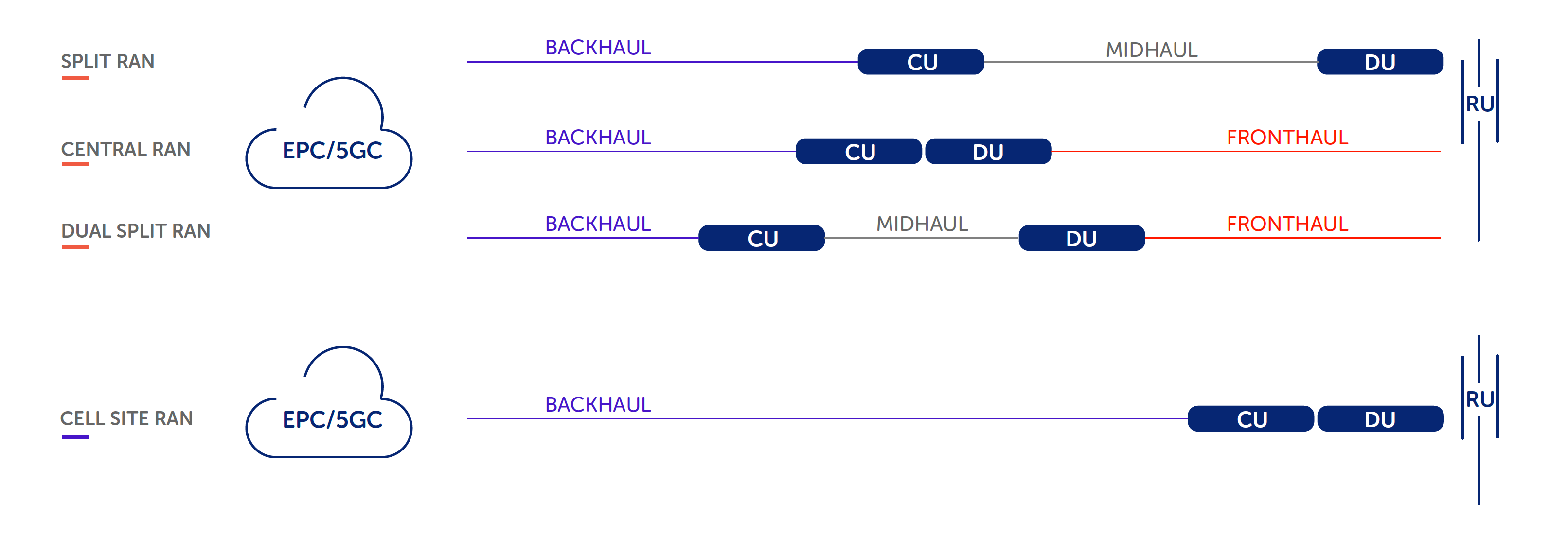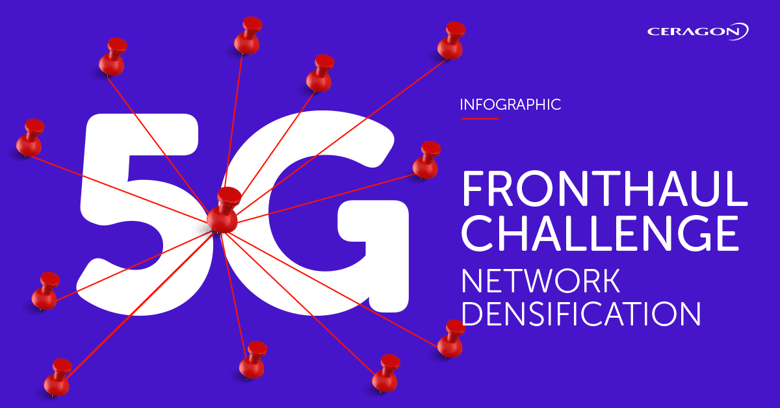|
|
One of the main challenges of successful 5G deployments is network densification. This challenge derives from the need for additional capacity everywhere and from the use of higher frequency bands in the radio access network (RAN).
There are two main approaches to densifying the RAN – centralized RAN and decentralized RAN. The decentralized approach follows the classic network architecture and creates a fully functional small cell. The centralized RAN approach splits the base station (eNB or gNB) functionality and allows operators to deploy simple, cost-efficient remote radio heads (4G RRHs) or radio units (5G RUs) in remote sites while keeping baseband processing functionality in a more central location.
There is a major tradeoff, though, between these two methods. While centralized RAN brings significant benefits with regards to the cell site cost and the level of coordination of adjacent cells, the decentralized RAN architecture requires a significantly lower-capacity connection to each site.
This tradeoff is the reason why many operators take a hybrid approach when planning their network, choosing a best-fit network split for each network scenario.
Those network splits options are created from the physical location options for each gNB element – the central unit (CU), the distributed unit (DU) and the radio unit (RU) – as illustrated below:

The main questions remain, though. Which network deployment strategy will be chosen by mobile operators? What will be their first step, in terms of cell site locations and RAN bands? What will be the chosen network split as their networks evolve? And how will they accommodate the high capacity required for fronthaul connectivity, where fiber is not available or feasible?


